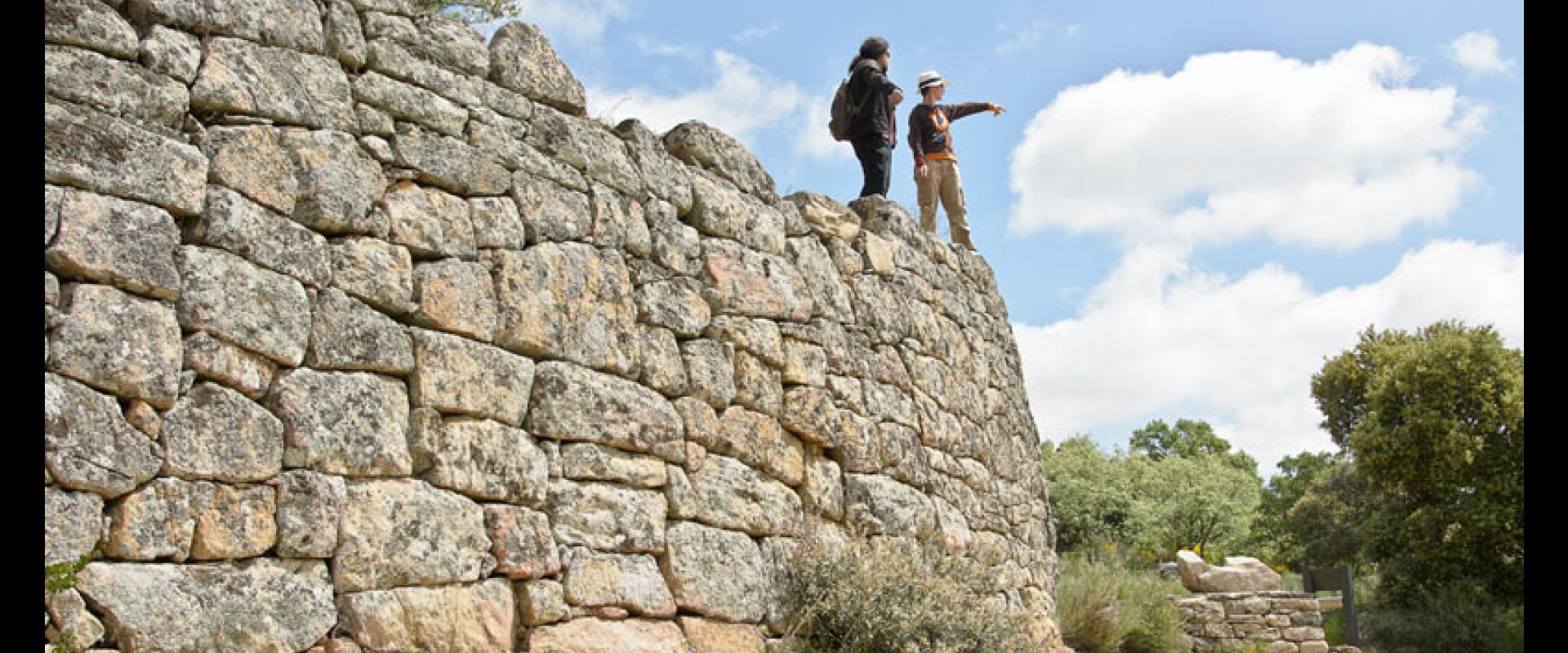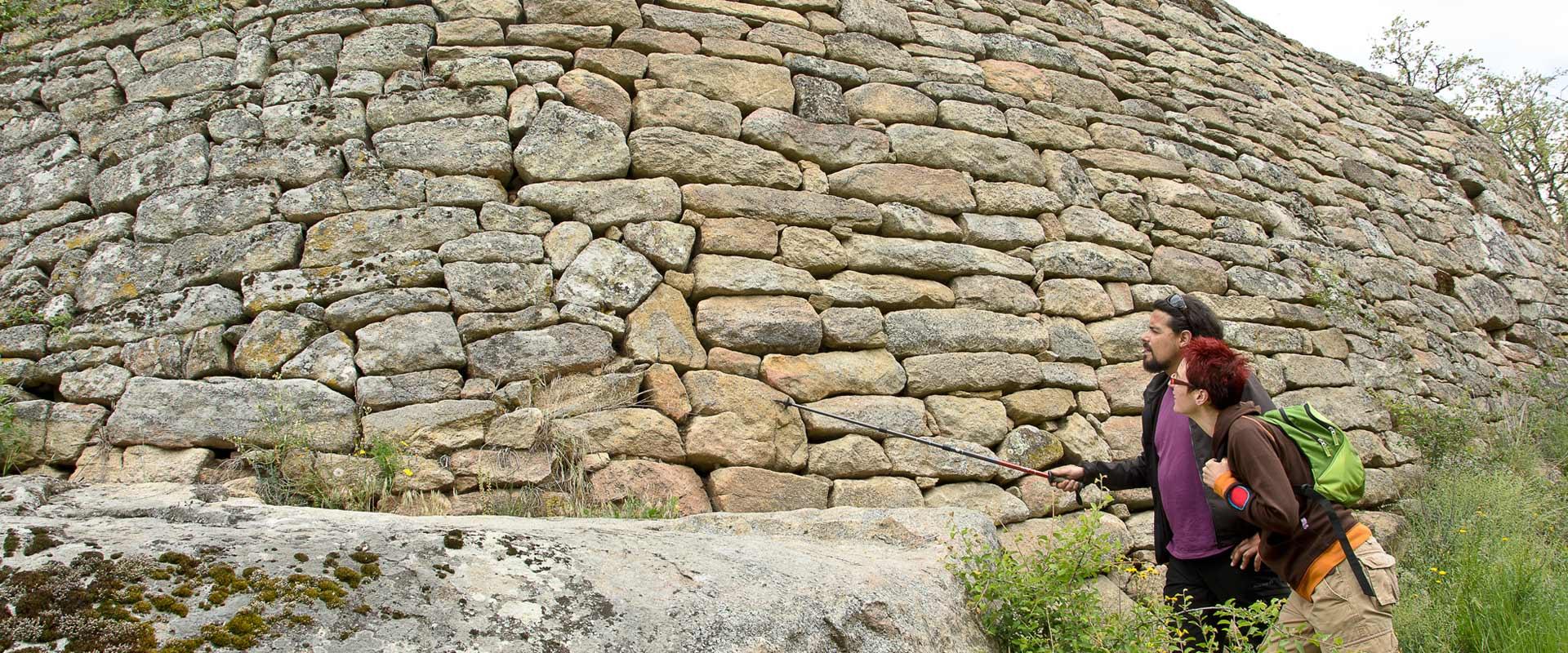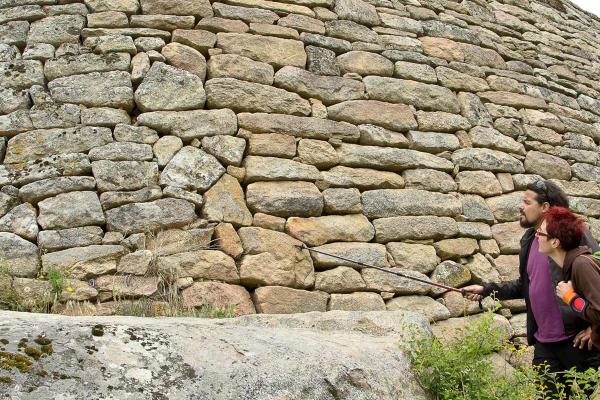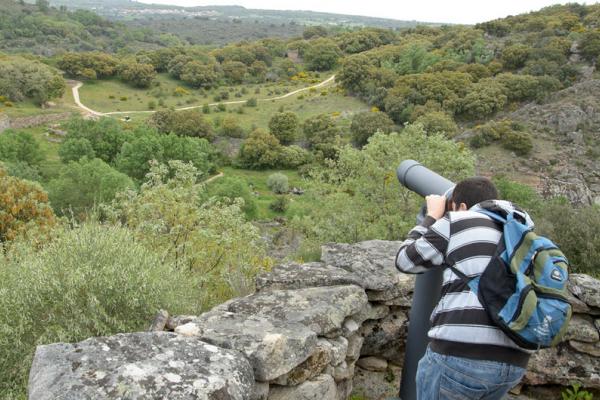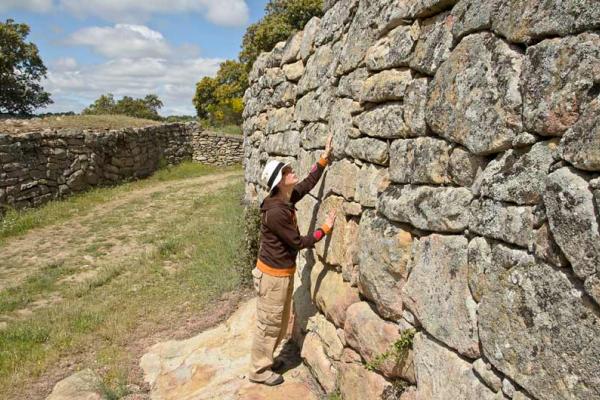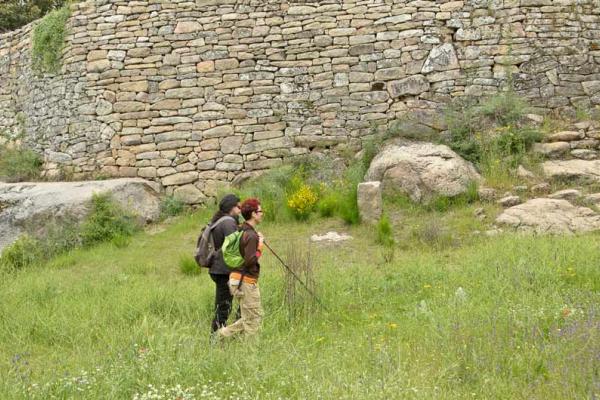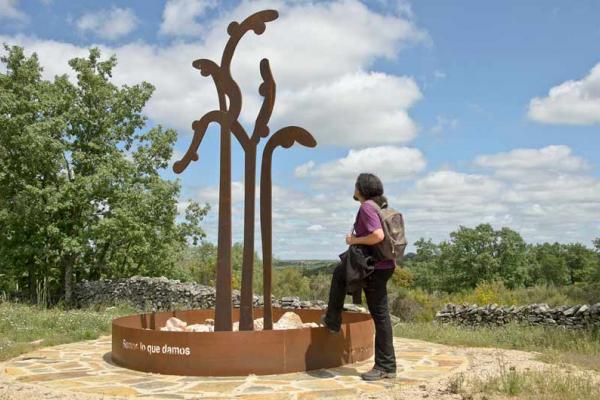Lumbrales tour: Las Marchenas fortified settlement
Lumbrales is the entrance door to the Veton territory.
This first tour starts in the village of Lumbrales, at the Count´s House. The Reception Centre for Visitors of the Veton Territory is located there. It is a Modernist Portuguese-colonial style building, which was built between 1875 and 1877 to honour Princess Isabel, Alfonso XIII´s daughter, on the occasion of the Duero railway opening.
Getting inside this house involves going in depth into the unique universe of the builder by admiring the rooms, the forge or plaster items, where you can still hear the echo and efforts of this dreamer businessman.
There are interesting didactic and interpretation resources in the Count´s House and the Archaeological Museum to enjoy your visit.
The door of the Count´s House is protected by a magnificent verraco known in the village as the “burro de la Barrera”, which is like a warm-up before visiting Las Merchanas fortified settlement.
There is a path that is structured as a museum and leads to the Fortified Settlement. It has lookouts and interpretation tutorials where the visitor can discover the keys of the settlements and their culture.
The natural landscape reflects the human intervention. Beside the traditional huts and the holm oaks there are beautiful fences; some of them are really high and long, such as the ones which delimit the alley called Malpica street.
The Mirador del Castro has an Interpretation tutorial about the Vetones and the landscape where they settled down. The visitor will be able to get a first view of the fortified settlement.
On the river banks, which used to be the first defensive place of the fortified settlement, the visitor can enjoy an amazing landscape that invites you to joy as well as reflection. An old mill, which has been restores and shows the creativity of our ancestors, and the bridge, definitely lead the visitor to the old fortified settlement.
Las Merchanas Castro almost preserves the whole part of the walled area, which extends for 5 hectares. It was declared a Cultural Interest Site in 1931.
The wall and the Roman and Veton doors (where some schematic engravings have been discovered) are only some of the amazing places of this site; there is also a piece of land with stones stuck on it located in the most accessible area of the walled perimeter. In spite of the height and strength of the walls, the Veton people used to protect themselves with thousands of stones which they used to stuck vertically like blades. These stones prevented the cavalry from attacking them.
It is advisable to visit this place in order to get to know the Veton culture and to get ready to visit Las Merchanas fortified settlements - located near this place- and Yecla de Yeltes.
